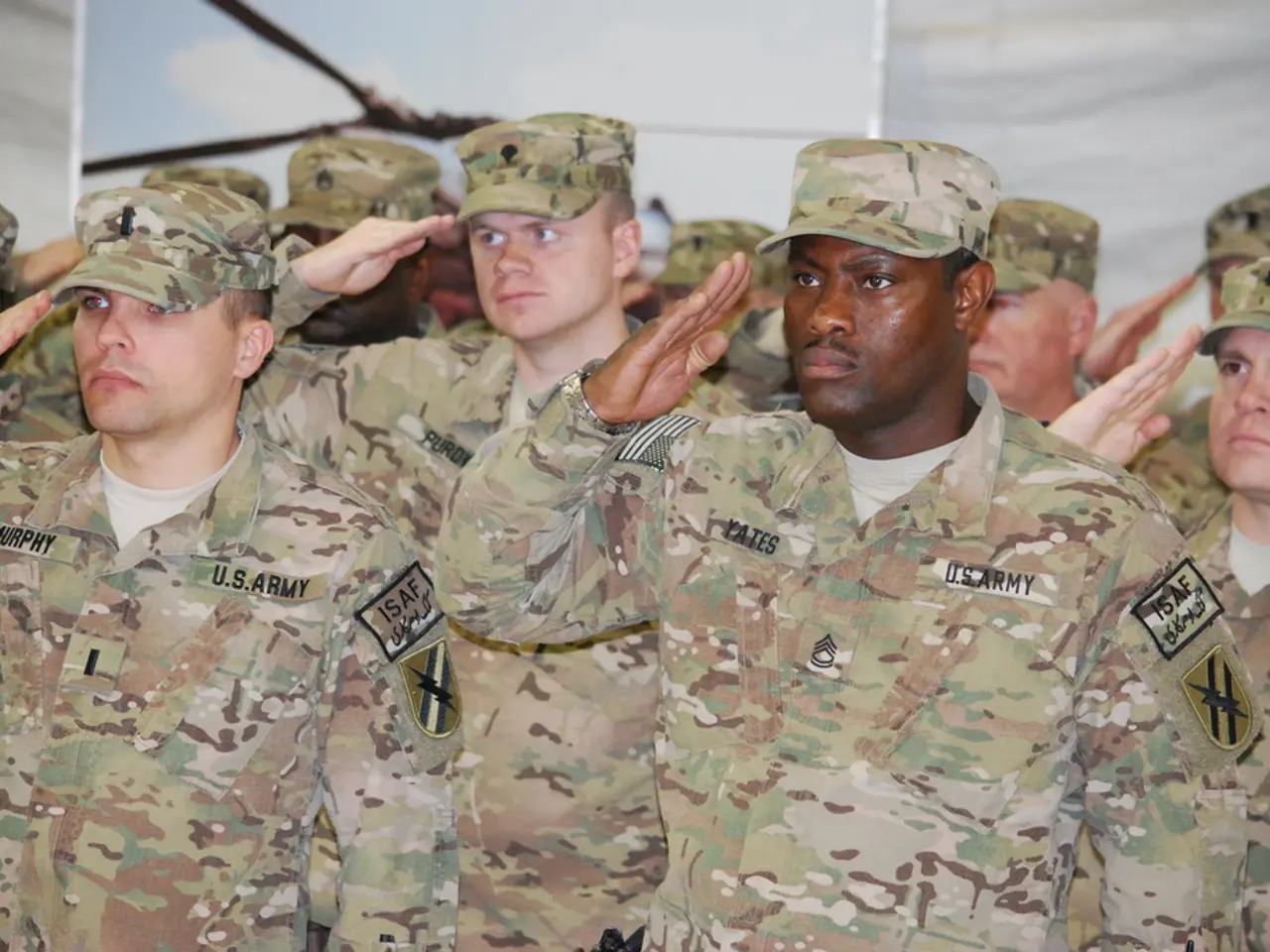Transforming the US Army's Human Resources: Four Key Stages to Boost Personnel Modernization Strategy
The United States Army is embarking on a significant transformation of its Human Resources (HR) practices, addressing persistent challenges such as sexual harassment, assault, racism, and domestic extremism, while also striving for a more inclusive and productive workforce.
The Army's HR challenges, in part, stem from a reimagined HR strategy without a simultaneous reassessment of its HR capabilities. However, progress is being made, with the implementation of a new Human Resource Information System, IPPS-A, creating a data-rich HR environment essential for a robust people analytics capability.
The Army's most senior leaders, including General James McConville, the Army's chief of staff, and Major General Douglas Stitt, the US Army's Director of Military Personnel Management, are collaborating to create a strategic HR capability that prioritizes people. This shift from transactional, compliance-focused personnel management to transformational, productivity-enhancing talent management has proven to be consequential and successful.
The Army's HR community, including experts like Dr. Mike Colarusso, a researcher in the Office of Economic and Manpower Analysis at West Point and a coauthor of the Army People Strategy and Senior Officer Talent Management, are driving this change. Real progress has been made in Army people practices, with more HR-specific organizational research, new talent assessments, improved leader selection processes, enhanced marketing and recruiting practices, and talent-focused job markets.
However, the Army's HR approach has been misaligned with its organizational strategy and has often treated people as interchangeable parts rather than uniquely talented individuals. To rectify this, the Army's HR processes are being redesigned to be specific, differentiating, actionable, future-oriented, and capability-focused.
Organizational culture plays a vital role in mission accomplishment and must change constantly to remain in alignment with an organization's strategy. The Army's overarching culture is control-oriented, top-down, and tends to avoid dissent and disagreement, leading to organizational silence. To overcome this, a planned change model is recommended for implementing whole-system change in the Army's HR function.
The Army has published its first-ever People Strategy, which identifies strategic HR capabilities required for achieving its goals. This strategy aligns with the current trend in HR departments, where cutting-edge departments possess interdisciplinary expertise in areas such as strategic planning, organizational research, culture, talent management, learning and development, performance management, people analytics, labor economics, workforce planning, diversity and inclusion, total rewards, employee relations, risk management, and succession planning.
Moreover, models like Jay Galbraith's 'Star Model' are being adopted to align the five factors necessary for an effectively functioning organization: strategy, structure, processes, rewards, and people. The Positive Model (Appreciative Inquiry) is also a good fit for the Army's culture and context, as it promotes a strengths-based approach to change and broad involvement in the change effort.
General Douglas Stitt, currently serving as the commanding general of the U.S. Army Training and Doctrine Command (TRADOC), emphasizes the importance of this transformation, stating that 'failing to blend organization design and development (OD&D) is like trying to row across a lake with one oar.'
In the human capital era, where no other resource drives or constrains productivity to the extent that an organization's people do, the Army is committed to transforming its HR practices to better serve its people and, ultimately, its mission.
Read also:
- Federal petition from CEI seeking federal intervention against state climate disclosure laws, alleging these laws negatively impact interstate commerce and surpass constitutional boundaries.
- Duty on cotton imported into India remains unchanged, as U.S. tariffs escalate to their most severe levels yet
- Steak 'n Shake CEO's supposed poor leadership criticism sparks retaliation from Cracker Barrel, accusing him of self-interest
- Dim outlook for a major energy corporation




